Butterfly Genomics
Emory biologists show how monarchs fly differently, but meet up and mate
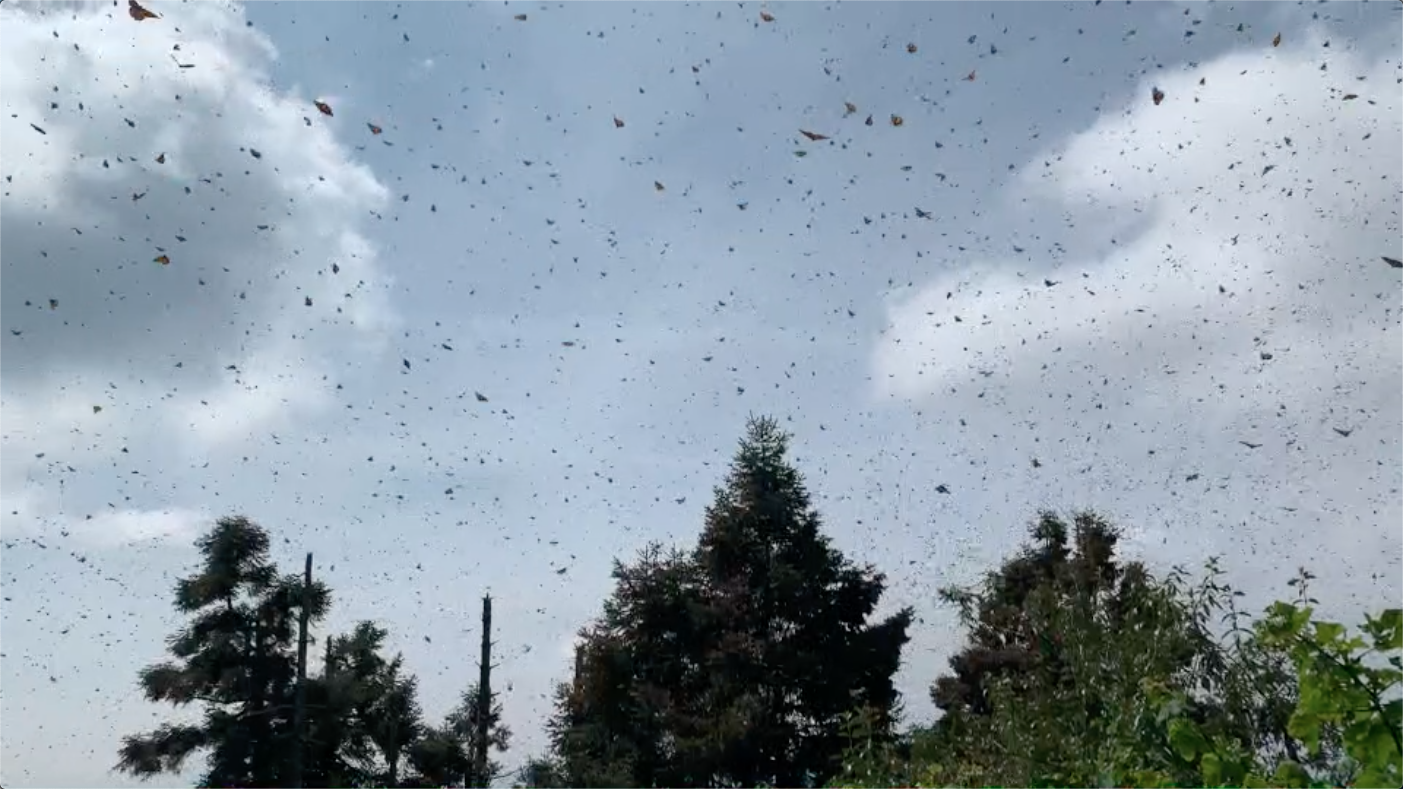
Each year, millions of monarch butterflies migrate across eastern North America to fly from as far north as the U.S.-Canadian border to overwinter in central Mexico — covering as much as 3,000 miles. Meanwhile, on the other side of the Rocky Mountains, western monarchs generally fly 300 miles down to the Pacific Coast to spend the winter in California. It was long believed that the eastern and western monarchs were genetically distinct populations.
A new study, however, confirms that while the eastern and western butterflies fly differently, they are genetically the same. The journal Molecular Ecology published the findings, led by evolutionary biologists at Emory University.
“It was surprising,” says Jaap de Roode, Emory professor of biology and senior author of the study. His lab is one of a handful in the world that studies monarch butterflies.
“You would expect that organisms with different behaviors and ecologies would show some genetic differences,” de Roode says. “But we found that you cannot distinguish genetically between the western and eastern butterflies.”
The current paper builds on previous work by the de Roode lab that found similarities between 11 genetic markers of the eastern and western monarchs, as well as more limited genetic studies by others, and observational and tracking data.
“This is the first genome-wide comparison of eastern and western monarchs to try to understand their behavioral differences better,” says Venkat Talla, first author of the current study and an Emory post-doctoral fellow in the lab.
Talla analyzed more than 20 million DNA mutations in 43 monarch genomes and found no evidence for genomic differentiation between eastern and western monarchs. Instead, he found identical levels of genetic diversity.
“Our work shows that the eastern and western monarchs are mating together and exchanging genetic material to a much greater extent than was previously realized,” Talla says. “And it adds to the evidence that it is likely differences in their environments that shapes the differences in their patterns of migration.”
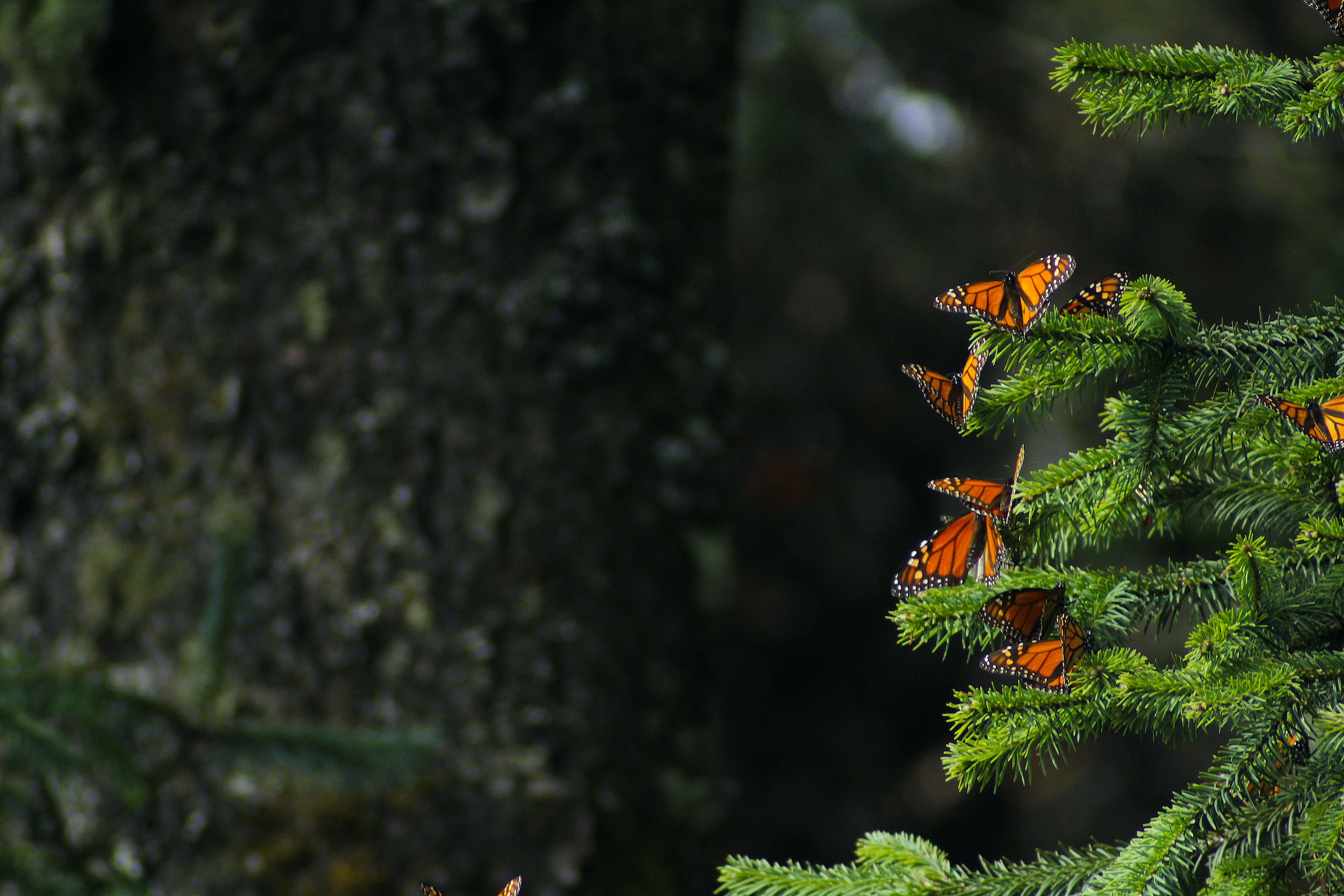
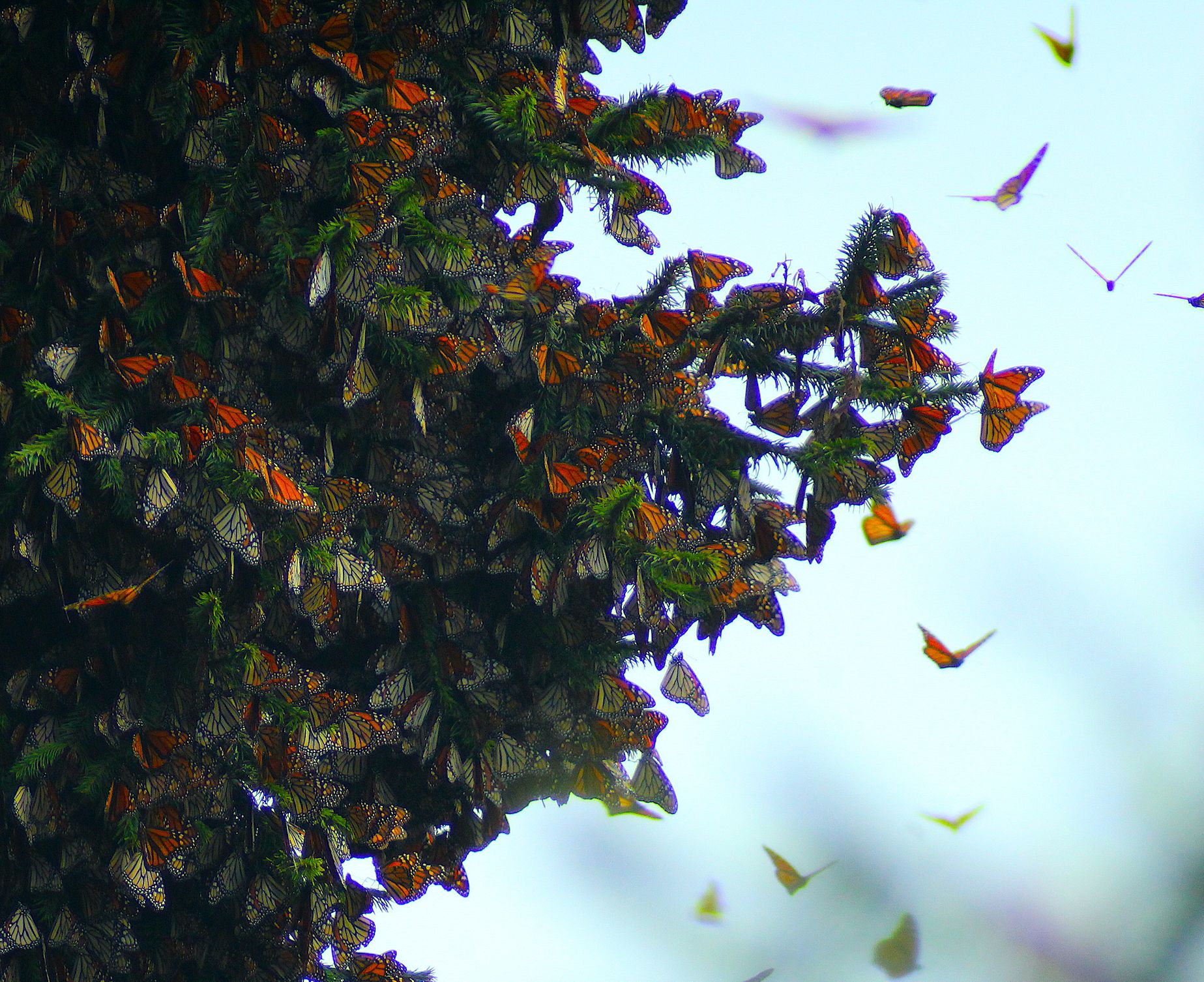
Co-author Amanda Pierce, who led the earlier study on 11 genetic markers, launched the project while she was a graduate student in the De Roode Lab.
“Monarch butterflies are so fragile and so lightweight, and yet they are able to travel thousands of miles,” Pierce says. “They are beautiful creatures and a great model system to understand unique, innate behaviors. We know that migration is ingrained in their genetic wiring in some way.”
After monarchs leave their overwintering sites, they fly north and lay eggs. The caterpillars turn into butterflies and then fly further, mating and laying another generation of eggs. The process repeats for several generations until finally, as the days grow shorter and the temperatures cooler, monarchs emerge from their chrysalises and start to fly south. This migratory generation does not expend any energy on breeding or laying eggs, saving it all for the long journey.
“For every butterfly that makes it to California or to Mexico, that’s its first journey there,” Pierce marvels.
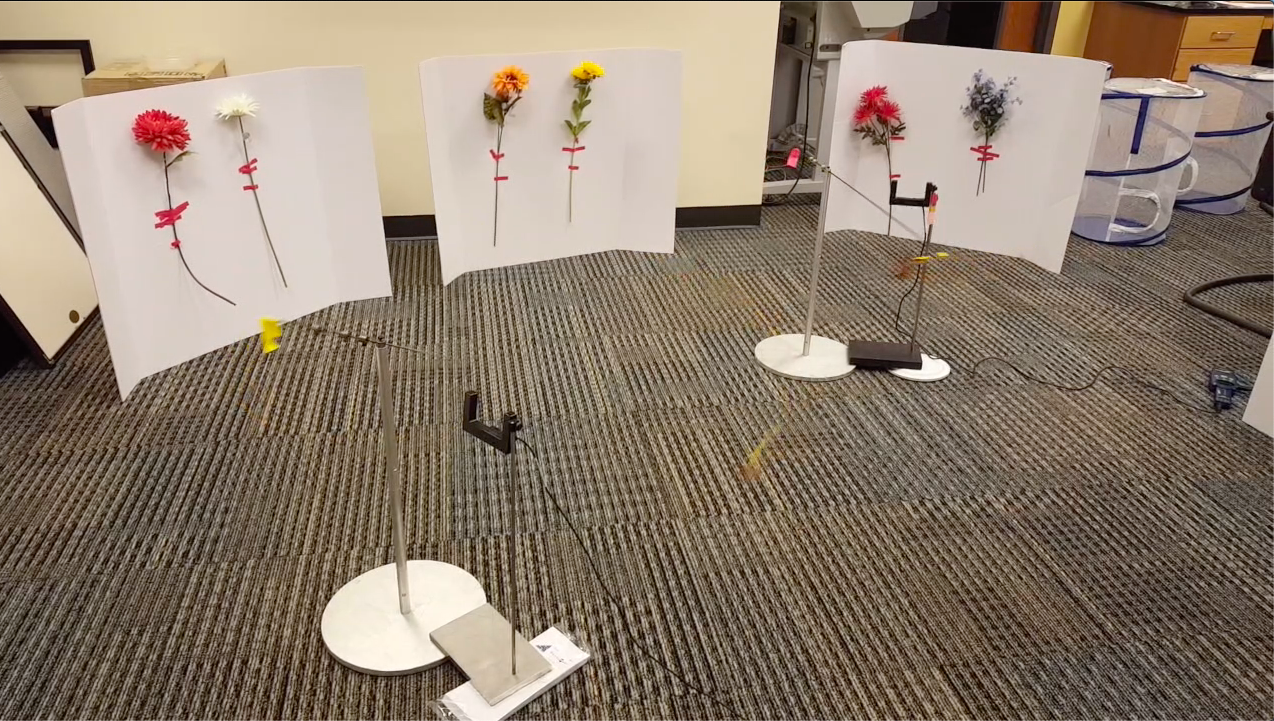
Previous work had identified a propensity for the eastern and western monarchs to have slight differences in their wing shapes. For the current paper, the researchers wanted to identify any variations in their flight styles.
They collected eastern monarchs from a migratory stopover site in Saint Marks, Florida, and western monarchs from one of their overwintering sites near Oceano, California. Pierce ran flight trials with the butterflies by tethering them to a mill that restricted their flight patterns to circles with a circumference of about 25 feet. The trials were performed in a laboratory under controlled light and temperature conditions that mimicked overwintering sites. Artificial flowers were arranged around the circumference of the flight mills.

Graphic shows the set up for the flight mills used in the experiments. (De Roode Lab)
Graphic shows the set up for the flight mills used in the experiments. (De Roode Lab)
“The idea was to try to give them some semblance of a ‘natural’ environment to help motivate them and to orient them,” Pierce explains.
Butterflies were released unharmed from the flight mills after performing short trials.
The results showed that the eastern monarchs would choose to fly for longer distances while the western monarchs flew shorter distances but with stronger bursts of speed. “The more powerful flight trait of the western monarch is like a sprinter, essentially,” Pierce says, “while the eastern monarchs show a flight trait more like marathoners.”
Pierce has since graduated from Emory and now works as a geneticist for the Environmental Protection Agency in Washington, D.C.
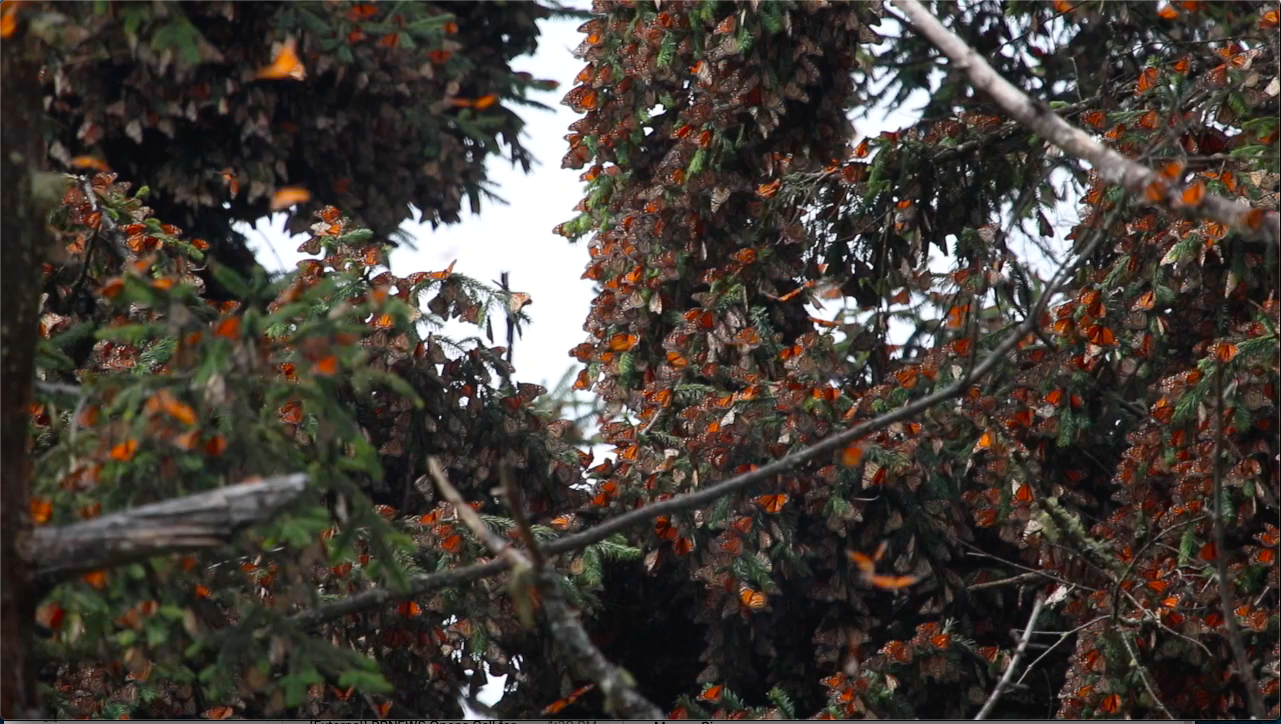
Talla, who specializes in bioinformatics, grew up in India where the rich diversity of wildlife inspired him to become an evolutionary biologist. He moved to Sweden to get his PhD, where he studied the genomics of the European wood white butterfly. Although all wood whites appear identical visually, they are actually three different species.
“One of the big questions I’m interested in answering is how does an individual species wind up becoming multiple species?” Talla says. “I want to understand all the processes involved in that evolution.”
He jumped at the chance to join the De Roode Lab. “Monarchs have always been at the top of my list of butterflies I wanted to study because of their incredible migrations,” Talla says. “They are a fascinating species.”
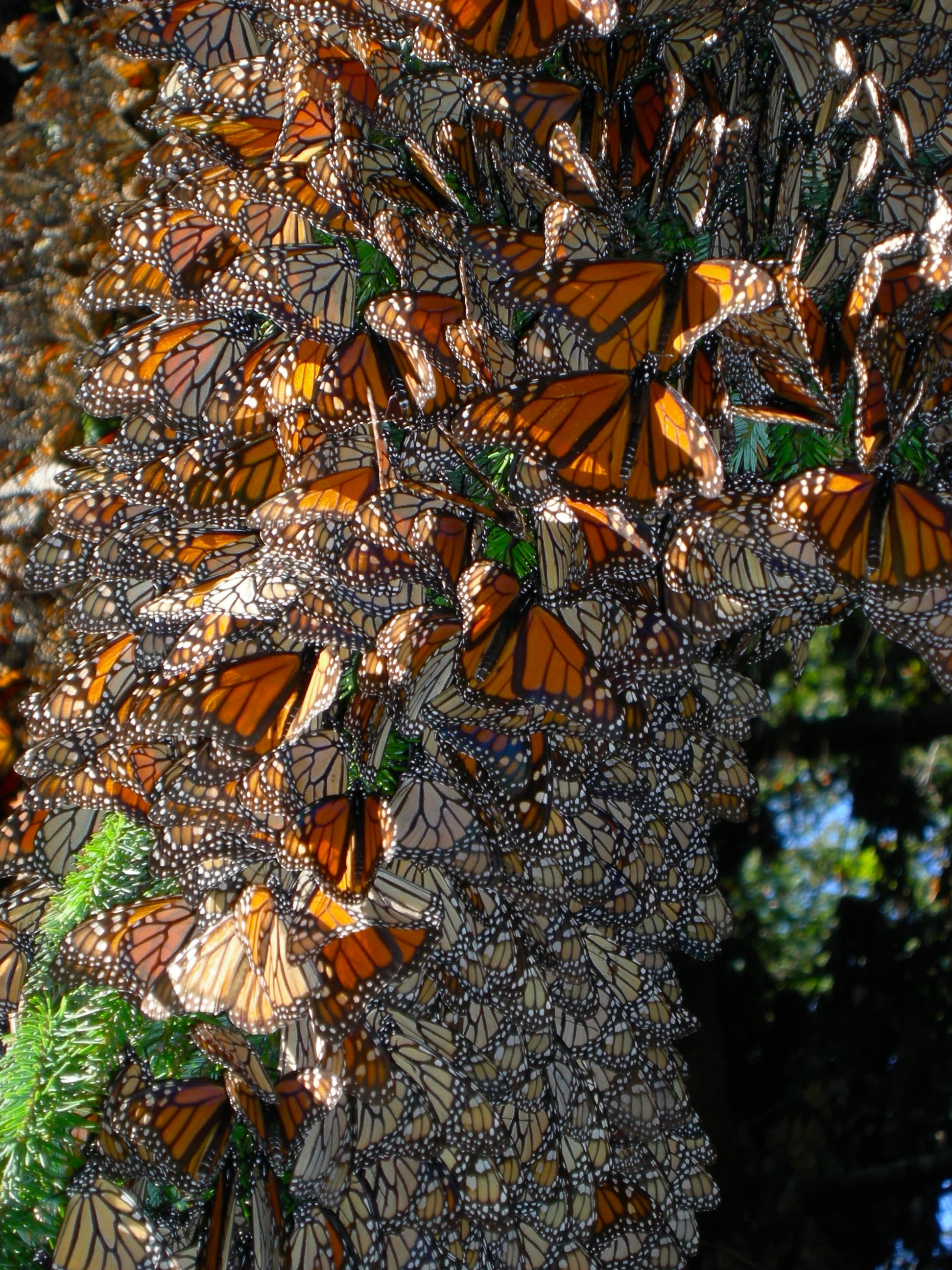
Monarchs congregating in Mexico. "We know that migration is ingrained in their genetic wiring in some way," Pierce says. (Photo by Jaap de Roode)
Monarchs congregating in Mexico. "We know that migration is ingrained in their genetic wiring in some way," Pierce says. (Photo by Jaap de Roode)
Last November, he joined de Roode on a lab field trip to the eastern monarch overwintering site, inside and adjacent to the Monarch Butterfly Biosphere Reserve in central Mexico. Tens to hundreds of millions of monarchs blanket the trees and landscape through the winter. “It’s a mind-blowing sight,” Talla says. “It makes you wonder how they all know how to get there.”
Previous tracking and observational studies had shown that at least some western monarchs fly south to Mexico instead of west to California. The full-genome analysis suggests that more than just a few of the western monarchs may be making the trip to Mexico where they mix with the eastern monarchs. And when the butterflies depart Mexico, some may fly west instead of east.
“Evidence from multiple directions is coming together to support the same view,” de Roode says.
The findings may help in the conservation of monarchs. Due to a combination of habitat loss, climate change and lack of nectaring flowers, numbers of both eastern and western monarchs have declined in recent decades, with the western ones showing the most precipitous drop. The U.S. Fish and Wildlife Service is currently considering whether the butterflies need special protections.
“If environmental factors are all that drives the differences between the eastern and western monarchs, it’s possible that we could help the western population by transplanting some of the eastern ones to the west,” de Roode says.
The De Roode lab now plans to investigate what exactly in the environments of the butterflies triggers different expressions of their genes.
Co-authors of the current paper include Emory post-doctoral fellow Kandis Adams; Emory visiting student Tom de Man; Sumitha Nallu and Marcus Kronforst, both from the University of Chicago; and Francis Villablanca from Polytechnic State University in Obispo, California.
The work was funded by Emory University, the National Science Foundation and the National Institutes of Health.
To learn more:
Emory Department of Biology, the De Roode Lab
For media inquiries: Carol Clark, 404-727-0501, carol.clark@emory.edu

